Thanks to the support of Maison Hennessy, Reforest'Action is helping the NGO Agriwezesha to develop agroforestry in villages of the Morogoro region, close to the Uluguru forest reserve. Initiated in 2022, the project has planted an estimated 440,000 trees to date. It is helping to create income and livelihoods for local communities, as well as restoring a forested buffer zone to mark the boundary between the Uluguru Forest Reserve and farmland. Emblematic of Hennessy's commitment to forests, the project reflects the company's desire to help protect biodiversity and the water cycle, and to take action in the face of the climate emergency.
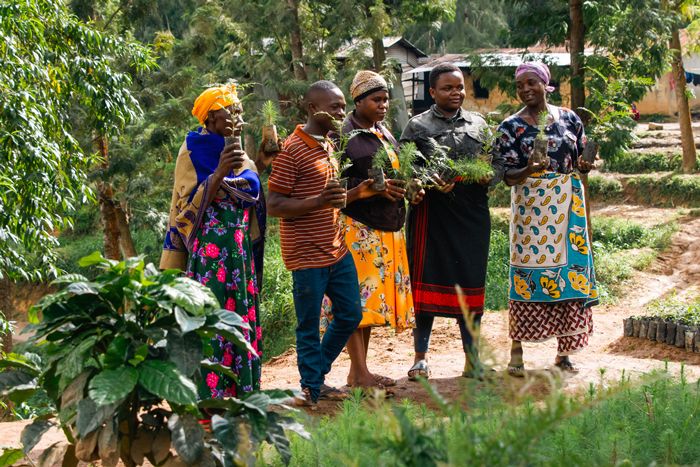
A project emblematic of Maison Hennessy's commitment to forests
Located in the Morogoro region of Tanzania, the Mvomero district is marked by a decline in its forest cover due to bush fires, agriculture and logging for fuelwood production. With 3,000 hectares of forest lost in the district in 2020, the forest services from which local communities benefit are under threat - including the availability of wood for cooking and non-timber forest products such as medicinal plants. Climate change, amplified on a local scale by the decline of the forests, is manifested in the form of reduced rainfall, which has an impact on crops. As a result, fresh produce such as fruit and vegetables are also in short supply. These are essential to the food security of local communities, but also to their economy, since their sale on local markets is the main source of income for villagers.
Against this backdrop, Maison Hennessy, a Reforest'Action partner since 2020, is funding an agroforestry and reforestation project that has resulted in the planting of an estimated 440,000 trees between 2022 and 2023. 80% of the trees have been planted on farms, and the remaining 20% have helped to restore the edge of the Uluguru forest reserve. This project is part of Maison Hennessy's Forest Destination program, which is committed to preserving and regenerating 50,000 hectares of forest ecosystems in France and around the world by 2030, to protect biodiversity and the water cycle, and to act in the face of the climate emergency.
To deploy this project, Reforest'Action and Maison Hennessy have chosen the Tanzanian NGO Agriwezesha, which since 2019 has been accompanying small farmers towards more sustainable farming practices that respect ecosystems, and facilitating their connections to markets. A double impact, both socio-economic and environmental, is expected from this project, which contributes to improving the living conditions of local communities through the production and sale of fruit from the planted trees, as well as the restoration of a buffer zone around a protected forest reserve.

Involve local communities in the project through plant production and training sessions
The first phase of the project was initiated in the field in spring 2022, with the aim of fully involving local communities. Within 25 villages selected by Agriwezesha for the 2022-2023 season, farmers interested in developing agroforestry on their farms were invited to register to take part in the project. At the same time, community plots were made available to our partner, within the villages themselves, for the construction of nurseries dedicated to the production of seedlings. After consulting farmers to gather their needs and preferences, Agriwezesha technicians selected a wide range of tree species, including timber trees such as Croton megalocarpus, and fruit trees such as avocado.
The nurseries were set up in the summer of 2022 and, until February 2023, were used for seedling production, carried out directly by project beneficiaries. At the same time, Agriwezesha conducted training sessions for over 6,000 farmers enrolled in the project on agroforestry-related topics, such as avocado grafting and seed propagation techniques, pest control and the maintenance of trees integrated into agricultural plots.
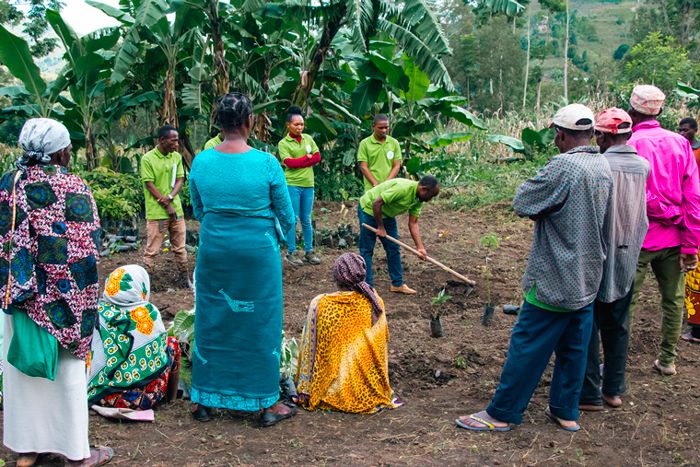

Developing agroforestry for food security and energy self-sufficiency
Thanks to the rainy season, all the planting was carried out between March and May 2023. The trees, which were distributed to beneficiaries in nurseries, were planted on their farms in different patterns according to their needs - in alleys within cultivated fields, at the edge of agricultural plots or in the open to form forest islands providing energy and edible resources.
The creation of these agroforestry systems will provide numerous benefits for the environment and local communities. By restoring and enriching cultivated soils, reducing erosion on steep slopes within the farms, and providing protective cover for food crops such as corn, bananas, beans and cassava, the trees planted will help boost the productivity of these crops. They will also improve the retention of run-off water in the soil and increase the availability of water resources. Vegetation cover enhances the volume of local rainfall, rebalancing the hydrological and climatic cycle. This is a key issue, since the Uluguru Mountains watershed, where the project is located, supplies water to the surrounding towns, including Dar es Salaam, 200 kilometers away.
Woody species such as Croton, acacia, albizia and Grevillea will enable farmers to be more energy self-sufficient and no longer draw from the surrounding protected forests, thanks to the supply of firewood, an essential everyday resource. As for fruit trees, such as avocado, lemon, peach, apple, mandarin and orange, they will produce fruit, seeds or spices for family consumption or for sale on local markets, a source of additional household income. As women are the main market goers, they have benefited from specific training courses run by Agriwezesha with the future aim of supporting their commercial activities and developing their outlets.
The agroforestry component of the project will thus contribute directly to increasing the availability of fresh produce, both by helping to protect food crops and by producing additional edible resources. This is a particularly interesting solution for improving the quality of life of the small-scale farmers involved in the project, who depend exclusively on their cultivated produce for their livelihoods, and for reducing the rural exodus due, in particular, to the scarcity of resources and jobs in the region.

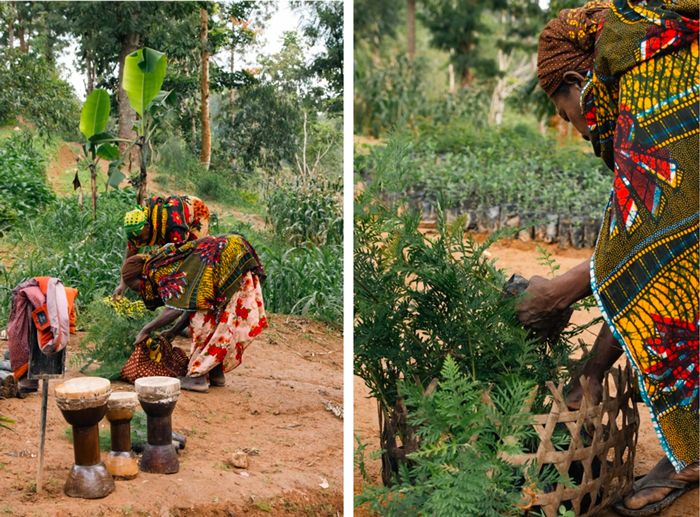
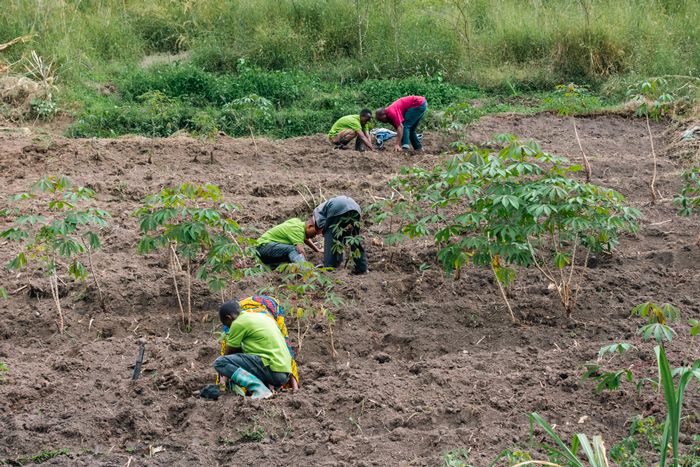
Preserve the natural resources of the Uluguru reserve by restoring a buffer zone
Alongside the agroforestry component, the project has also restored the degraded edge of the Uluguru protected forest reserve. This ecologically significant area, administered by the Tanzanian Forestry Services Society (TFS), is both a valuable carbon sink and a major reservoir of plant and animal biodiversity. Originally planted with eucalyptus and now under pressure from illegal logging, the buffer zone between cultivated land and the forest reserve was restored between March and May 2023. The planting work was carried out, in coordination with TFS, by the project's beneficiary farmers whose farmland adjoins the forest.
This reforestation component contributes directly to the protection of the reserve's native species and natural resources. It increases the visibility of the boundary between the cultivated plots and the protected forest. In addition, Agriwezesha has carried out educational activities to raise farmers' awareness of the importance of preserving the integrity of the forest. It is also complemented by the agroforestry component of the project, which makes firewood resources available on the farms themselves, thereby discouraging communities from illegally felling native trees within the reserve. Within the buffer zone, on the other hand, the harvesting of fallen eucalyptus branches is authorized by the TFS, with the aim of further increasing the wood resources available to farmers.
In addition to its land delimitation function, the restoration of the Uluguru reserve edge will increase the volume of the carbon sink it represents and ensure the continuity of the forest cover.

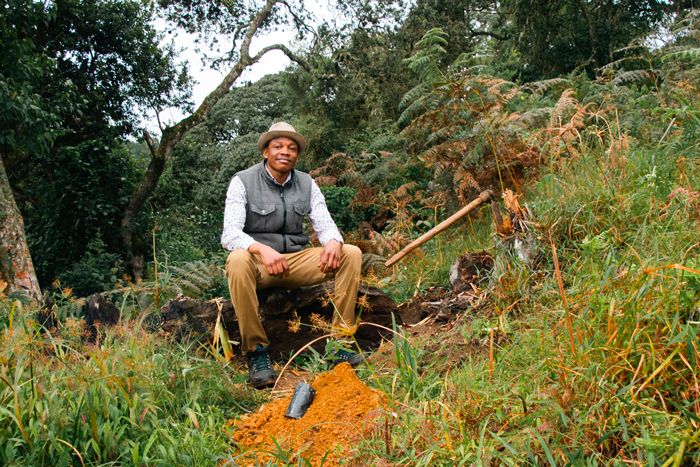

The Morogoro project in Tanzania illustrates Maison Hennessy's commitment to supporting projects with a long-term environmental and socio-economic impact. As well as agroforestry and reforestation activities, the project's educational dimension aims to support farmers in the deployment of sustainable, environmentally-friendly agricultural practices, enabling them to improve their living conditions over the long term by marketing self-sufficiently produced goods.